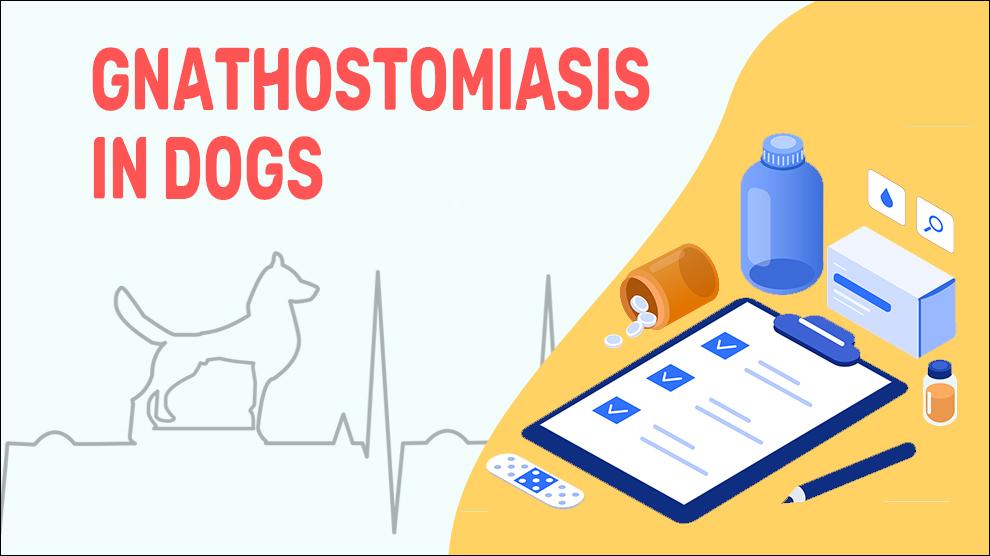What Is Gnathostomiasis In Dogs?
Gnathostomiasis is a food-borne zoonotic, arasitic infection caused by parasitic nematode worms of the Gnathostoma species. Gnathostomiasis Infection occurs after consumption of paratenic/ intermediate hosts, raw or poorly cooked freshwater fish, crab, shrimp, crayfish, chicken, or frogs.
Gnathostomiasis appears most commonly in certain geographic locations such as Southeast China, South Asia, and Central and Latin America. Gnathostoma Spinigerum is the most prevalent species of Gnathostoma. G. Nipponicum, Hispidum, and G. Dolores have been documented in Asia. G. Binucleatum s found in the Central and Latin Americas.
Gnathostoma has an intricate life cycle. Gnathostoma Nematodes need one definitive host and two intermediate hosts to complete their life cycles. The fully developed worm resides in a tumor-like mass in the gastric wall of the stomach of a carnivore (dog, cat, tiger, or leopard) and releases unembryonated eggs in the feces. These microscopic eggs will go out of the animal through the feces.
When these eggs reach a water source, eggs will become free-swimming, embryonated first-stage larvae (L1). The L1 is then ingested by the first intermediate hosts such as a water flea or freshwater copepods (Mesocyclops and Eucyclops) where they can continue to develop and grow into second-stage larvae L2. When a second intermediate host such as a tadpole or a fish consumes a water flea that has larvae L2, the larvae will migrate into the new host’s muscular tissue and develop into L3.
Fish that are infected are transported or paratenic hosts are ingested by another host (bird, fish, turtle, or frog) and the larva will continue to develop in this new host. Actually, the larva transfers from many hosts in the water until a dog eat an infected intermediate host.
In the definitive host, they burrow into the abdominal cavity, liver, and connective tissues after penetrating the gastric wall. They produce an inflammatory response after their arrival in the gastric wall after 4 weeks and develop into adults in takes 6-8 months. the adult worm grows a nodule that can reach lengths of 20-50 mm. The worms mate after 8-12 months and eggs that are laid by the adult worm exit to the environment through the dog’s feces
Symptoms Of Gnathostomiasis In Dogs
Treatment Options For Gnathostomiasis In Dogs
Anti-helminthic drugs: Albendazole, Flubendazole, Fenbendazole, Oxibendazole, Mebendazole, Probenzimidazole or Thiabendazole drugs.
Access the severity of the condition, look into your dog's bowel movements, and check whether the things escalate or clear up.
Contact your vet right away if your pet has frequent bouts of diarrhea in a short time period.
Metronidazole is used for diarrhea.
Disinfectants such as chlorine bleach- diluted [one gallon of water] to treat the surfaces and premises safely.
Home Remedies For Gnathostomiasis In Dogs
- If your dog is having recurring bouts of diarrhea, Stop feeding your dog for some time and let your dog recover.
- For a day or two, it is good to offer a bland diet as it requires minimal digestion. Feed white rice and little fish or chicken.
- Alternatively, small quantities of meals can be offered every 4 hours.
- When your dog's bowel activity returns to normal, gradually reintroduce its regular food.
How To Prevent Gnathostomiasis In Dogs?
- Prevent your dogs from consuming raw or undercooked fish.
- When going for walks, keep your dog away from damp areas and areas near the water bodies, especially in endemic regions.
- Maintain your lawn or garden. Keep it neat and clean to avoid unwanted complications.
- Feed high-quality food and exercise regularly.
Affected Dog Breeds Of Gnathostomiasis
There is no breed disposition.
Causes, Diagnosis, And Prognosis For Gnathostomiasis In Dogs
1. Causes:
Gnathostoma nematodes have a complex life cycle. Gnathostoma needs one definitive host and two intermediate hosts to complete their life cycles.
When the intermediate hosts are consumed, the encysted, infectious larvae in the transport hosts undergo excystation in the stomach of the appropriate, definitive animal (dog). The adult worm resides in a tumor-like mass in the gastric wall of the stomach of the dog with an aperture that connects to the gastric lumen. They release unembryonated eggs in the feces 8-12 months after ingestion. These microscopic eggs will exit the dog through the feces.
2. Morbidity:
- Large breed dogs with outdoor access living in endemic regions are at higher risk.
- Herding and hunting dogs in close proximity to bodies of water and damp soil seem to be predisposed to the disease.
- Canine Gnathostomiasis will not spread from animal to animal
3. Mortality:
Gnathostomiasis is considered to be a rare disease. The knowledge about Gnathostomiasis infection is not yet understood fully.
4. Diagnosis:
- Blood and urine cultures
- X-rays, ultrasound, or CT scan
- Stool sample for testing.
5. Prognosis:
The prognosis for gnathostomiasis is really good. Most dogs undergoing treatment will recover within a few weeks. The chances of recovery of Dogs that have disseminated Gnathostomiasis are guarded due to the damage to the vital organs.
When To See A Vet For Gnathostomiasis In Dogs?
It’s better to set up an appointment with your veterinarian if you notice-
- Fever
- Vomiting and diarrhea
Food Suggestions For Gnathostomiasis In Dogs
- Lean Protein and Low-fat meats (ratio of omega-6 to omega-3 fats = 5:1)
- White Rice, Boiled boneless, skinless chicken breast meat
- Potatoes and Pumpkin (canned or pureed)
- Probiotics (yogurt, Goat's Milk, fermented vegetables, kefir with live cultures)
- Mashed boiled potatoes, carrots
- Bananas, Apples, Seaweed
Conclusion
With continuous research about infectious diseases ongoing nowadays, our understanding of Gnathostomiasis can only become expansive.
When your dog is infected with Gnathostoma, you only have to be concerned about the infection to other dogs. Although direct transmission is not possible, practice good hygiene and isolate the dogs to curtail environmental transmission.

















